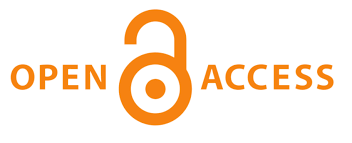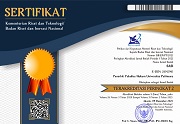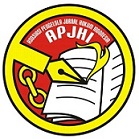Punishment Weighting for Criminal Acts of Corruption in Indonesia
 )
)
(1) Faculty of Sharia, Institut Agama Islam Negeri Lhokseumawe, Lhokseumawe, Indonesia
(2) Faculty of Law, Universitas Malikussaleh, Lhokseumawe, Indonesia
 Corresponding Author
Corresponding Author
Abstract
Introduction: Corruption in Indonesia is categorized as an extraordinary crime where an extraordinary measure is needed to give a deterrent effect to the perpetrators.
Purposes of the Research: This study aims at analyzing the various penalties contained in the corruption eradication law as a weight in an effort to reduce the number of corruption in Indonesia.
Methods of the Research: This type of research is legalistic, doctrinal or normative. The approach used in normative or legalistic research include a concept approach, a statute approach, historical approach, case approach, and comparative approach. However, this study only uses legal approach since it analyzes the severity of punishment for perpetrators of criminal acts of corruption in Indonesia. The provisions used in this research are Law no. 31 of 1999 jo. Law No. 20 of 2001 concerning the Eradication of Criminal Acts of Corruption and other related laws.
Results of the Research: The punishments applied in the law range from imprisonment, additional punishment to the death penalty. In addition, the punishment applied in this provision is in the form of punishment for revocation of political rights, dismissal, and impoverishment. Therefore, the Corruption Eradication Commission does not only use the Corruption Eradication Law in applying these punishments, but also Law no.8 of 2010 concerning the Prevention and Eradication of the Crime of Money Laundering.
Keywords
DOI
10.47268/sasi.v28i2.955
Published
2022-07-03
How To Cite
@article{SASI955,
author = {Mahdi Syihab and Muhammad Hatta},
title = {Punishment Weighting for Criminal Acts of Corruption in Indonesia},
journal = {SASI},
volume = {28},
number = {2},
year = {2022},
keywords = {Weighting; Punishment; Perpetrators; Corruption; Indonesia},
abstract = {Introduction: Corruption in Indonesia is categorized as an extraordinary crime where an extraordinary measure is needed to give a deterrent effect to the perpetrators.Purposes of the Research: This study aims at analyzing the various penalties contained in the corruption eradication law as a weight in an effort to reduce the number of corruption in Indonesia.Methods of the Research: This type of research is legalistic, doctrinal or normative. The approach used in normative or legalistic research include a concept approach, a statute approach, historical approach, case approach, and comparative approach. However, this study only uses legal approach since it analyzes the severity of punishment for perpetrators of criminal acts of corruption in Indonesia. The provisions used in this research are Law no. 31 of 1999 jo. Law No. 20 of 2001 concerning the Eradication of Criminal Acts of Corruption and other related laws.Results of the Research: The punishments applied in the law range from imprisonment, additional punishment to the death penalty. In addition, the punishment applied in this provision is in the form of punishment for revocation of political rights, dismissal, and impoverishment. Therefore, the Corruption Eradication Commission does not only use the Corruption Eradication Law in applying these punishments, but also Law no.8 of 2010 concerning the Prevention and Eradication of the Crime of Money Laundering.},
issn = {2614-2961}, pages = {307--322} doi = {10.47268/sasi.v28i2.955},
url = {https://fhukum.unpatti.ac.id/jurnal/sasi/article/view/955}
}
Journal Article
Arismaya, Anisa. "Facts, causes and corruption prevention: Evidence In Indonesian ministries." Journal of Contemporary Accounting 1, no. 2, (2019): 95-106. https://doi.org/10.20885/jca.vol1.iss2.art3.
Faurizka, Hani. “Framing Analysist of Beef Import Quota Bribery Case in Partai Keadilan Sejahtera (PKS) within The Koran Tempo.” Jurnal Interaksi Online, 2, no. 1, (2014): 1-5.
Hadi, Sadhono. “Corruption of the Local Leaders in Indonesia: An Expository Study.” Jurnal Media Hukum 27, no. 2, (2020): 241-255. https://doi.org/10.18196/jmh.20200155.
Hatta, Muhammad. “Perdebatan Hukuman Mati di Indonesia: Suatu Kajian Perbandingan Hukum Islam dengan Hukum Pidana Indonesia.” Jurnal Miqot. 36, no. 2, (2012): 320-341. http://dx.doi.org/10.30821/miqot.v36i2.121.
Kurniawan, T. “Corruptive Behavior of the Heads of Local Governments in Indonesia.” Law Review, 18, no. 22 (2017): 73-87.
McRae, Dave. “Indonesian Capital Punishment in Comparative Perspective.” Bijdragen tot de Taal Land-en Volkenkunde, 173, no. 1 (2017): 1-22. https://www.jstor.org/stable/26281573.
Muharosa, Haliva. "Tinjauan Yuridis Terhadap Pencabutan Hak Politik Bagi Terpidana Korupsi Di Indonesia." JOM Fakultas Hukum III, no. I (2016): 1–15.
Nazriyah, “R. Kewenangan Komisi Pemberantasan Korupsi dalam Penyidikan Kasus Simolator SIM (Kapolri VS KPK).” Jurnal Hukum Ius Quia Iustum 19, no. 4 (2012): 586-606. https://doi.org/10.20885/iustum.vol19.iss4.art6.
Pilli, Inggrid. "Hukuman Tambahan Dalam Putusan Pengadilan Tindak Pidana Korupsi." Lex Crimen 6. no. 6 (2015): 169–79.
Santoso, Topo. “Parties to Crime: Development and Comparison,” Indonesian Comparative Law Review 2, no. 2 (2019): 67-73. https://doi.org/10.18196/iclr.2217.
Sirin, Khaeron. "Penerapan Hukuman Mati Bagi Pelaku Kejahatan Korupsi Di Indonesia: Analisis Pendekatan Teori Maqàshid Al-Syarì’ah," Jurnal Hukum Islam 12, no. 1, (2013): 71–92.
Zaidan, M. A. “Norma, Sanksi dan Teori Pemidanaan, Jurnal Yuridis.” 1, no. 1 (2014): 107-115.
Book
Lamintang, P.A.F. Fundamentals of Criminal Law in Indonesia. Second Edition. Jakarta: Sinar Grafika, 2019.
Sobari, Ahmad. Pro dan Kontra Hukuman Mati. Jakarta: Lautan Ilmu, 2007.
Alvionita, V. Pengaruh tersangka operasi tangkap tangan Komisi Pemberantasan Korupsi terhadap elektabilitas Mustafa. Lampung: Universitas Islam Negeri (UIN) Raden Intan, 2019.
Marzuki, Ahmad. Hukum Pidana Indonesia. Third Edition. Bandung: Refika Aditama, 2021.
Rubio, D. F. Corruption Perceptions Index 2017. Jakarta: Transparency International, 2018.
Junaidi, A. Korupsi dan Dampak Negatifnya, Pola Kegiatan dan Penindakannya serta Peran Pengawasan dalam Penanggulangannya. Jakarta: Restu Agung, 1995.
Siahaan, Albert. Penyebab dan Dampak Korupsi. Semarang: Mataram Press, 2003.
Ismail, R. Substansi Undang-Undang Pemberantasan Tindak Pidana Korupsi. Jakarta: Sinar Grafika, 2018.
Cited-By:
1. Legal Implications of Corruption Cases Without Initial State Losses in Audit but Found During Investigation Case Of Issuing Ship Permits
MHD. Fatria, Elwi Danil, Aria Zurnetti, Azmi Fendri, G. Jameson, I. Gibson, P. Doumenq, T. Yamamoto, T. Mare, H. Pardi
BIO Web of Conferences vol: 134 first page: 04005 year: 2024
Type: Journal [View Source]
2. Tax Corruption: Legal Loopholes and Criminal Practices by High-Ranking Officials
Herry M Polontoh, Lestari Wulandari S
SASI vol: 30 issue: 3 first page: 310 year: 2024
Type: Journal [View Source]
| Dublin Core | PKP Metadata Items | Metadata for this Document | |
| 1. | Title | Title of document | Punishment Weighting for Criminal Acts of Corruption in Indonesia |
| 2. | Creator | Author's name, affiliation, country | Mahdi Abdullah Syihab; Faculty of Sharia, Institut Agama Islam Negeri Lhokseumawe, Lhokseumawe; Indonesia |
| 2. | Creator | Author's name, affiliation, country | Muhammad Hatta; Faculty of Law, Universitas Malikussaleh, Lhokseumawe; Indonesia |
| 3. | Subject | Discipline(s) | |
| 3. | Subject | Keyword(s) | Weighting; Punishment; Perpetrators; Corruption; Indonesia |
| 4. | Description | Abstract | Introduction: Corruption in Indonesia is categorized as an extraordinary crime where an extraordinary measure is needed to give a deterrent effect to the perpetrators.Purposes of the Research: This study aims at analyzing the various penalties contained in the corruption eradication law as a weight in an effort to reduce the number of corruption in Indonesia.Methods of the Research: This type of research is legalistic, doctrinal or normative. The approach used in normative or legalistic research include a concept approach, a statute approach, historical approach, case approach, and comparative approach. However, this study only uses legal approach since it analyzes the severity of punishment for perpetrators of criminal acts of corruption in Indonesia. The provisions used in this research are Law no. 31 of 1999 jo. Law No. 20 of 2001 concerning the Eradication of Criminal Acts of Corruption and other related laws.Results of the Research: The punishments applied in the law range from imprisonment, additional punishment to the death penalty. In addition, the punishment applied in this provision is in the form of punishment for revocation of political rights, dismissal, and impoverishment. Therefore, the Corruption Eradication Commission does not only use the Corruption Eradication Law in applying these punishments, but also Law no.8 of 2010 concerning the Prevention and Eradication of the Crime of Money Laundering. |
| 5. | Publisher | Organizing agency, location | Faculty of Law, Universitas Pattimura |
| 6. | Contributor | Sponsor(s) | Universitas Malikussaleh |
| 7. | Date | (YYYY-MM-DD) | 2022-07-03 |
| 8. | Type | Status & genre | Peer-reviewed Article |
| 8. | Type | Type | |
| 9. | Format | File format | |
| 10. | Identifier | Uniform Resource Identifier | https://fhukum.unpatti.ac.id/jurnal/sasi/article/view/955 |
| 10. | Identifier | Digital Object Identifier | 10.47268/sasi.v28i2.955 |
| 11. | Source | Title; vol., no. (year) | SASI; Volume 28 Issue 2, June 2022 |
| 12. | Language | English=en | en |
| 13. | Relation | Supp. Files |
Punishment Weighting for Criminal Acts Of Corruption in Indonesia (126KB) Punishment Weighting for Criminal Acts Of Corruption in Indonesia (126KB) |
| 14. | Coverage | Geo-spatial location, chronological period, research sample (gender, age, etc.) | |
| 15. | Rights | Copyright and permissions | Copyright: Authors who publish their manuscripts in this Journal agree to the following conditions: 1. The copyright in each article belongs to the author, as well as the right to patent. 2. Authors can enter into separate, additional contractual arrangements for the non-exclusive distribution of the journal's published version of the work (e.g., post it to an institutional repository or publish it in a book), with an acknowledgment of its initial publication in this journal. 3. Authors are permitted and encouraged to post their work online (e.g., in institutional repositories or on their website) before and during the submission process, as it can lead to productive exchanges, as well as earlier and greater citation of published work. 4. Authors have the right to self-archiving of the article (Author Self-Archiving Policy)
License: The SASI Journal is disseminated based on the Creative Commons Attribution-NonCommercial 4.0 International license terms. This license allows anyone to copy and redistribute this material in any form or format, compose, modify, and make derivatives of this material for any purpose. You cannot use this material for commercial purposes. You must specify an appropriate name, include a link to the license, and certify that any changes have been made. You can do this in a way that is appropriate but does not imply that the licensor supports you or your use.
|
Copyright (c) 2022 Mahdi Abdullah Syihab, Muhammad Hatta

This work is licensed under a Creative Commons Attribution-NonCommercial 4.0 International License.
Cited-By:
1. Legal Implications of Corruption Cases Without Initial State Losses in Audit but Found During Investigation Case Of Issuing Ship Permits
MHD. Fatria, Elwi Danil, Aria Zurnetti, Azmi Fendri, G. Jameson, I. Gibson, P. Doumenq, T. Yamamoto, T. Mare, H. Pardi
BIO Web of Conferences vol: 134 first page: 04005 year: 2024
Type: Journal [View Source]
2. Tax Corruption: Legal Loopholes and Criminal Practices by High-Ranking Officials
Herry M Polontoh, Lestari Wulandari S
SASI vol: 30 issue: 3 first page: 310 year: 2024
Type: Journal [View Source]

 : 5234 times
: 5234 times Download : 1733 times
Download : 1733 times
















